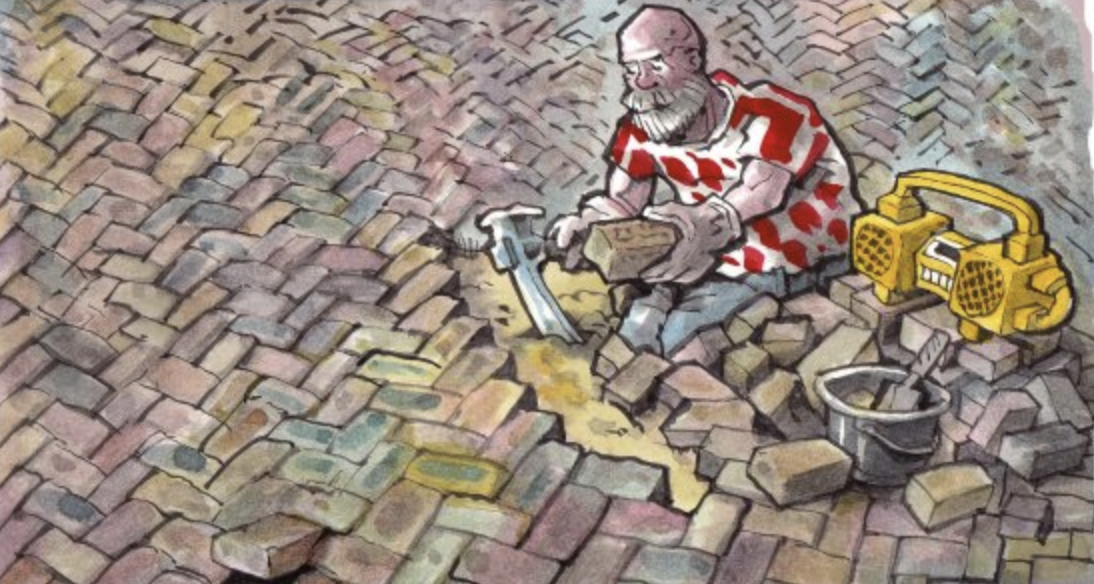Every old house and many footpaths in the Netherlands are made of grey-brown bricks. Why are bricks so commonly used in the Netherlands, I wonder?
Cycling around Wageningen, you often see workers repaving roads or pavements, brick by brick, with the same ease as if they were making puzzles or playing with Lego. They turn them upside down with a shovel, since underneath the bricks there is only sandy soil. Then the bricks are piled up and reused, as they are not spoiled.
It is amazing to see the speed at which these tasks are done. It is hard work which requires discipline and teamwork. Usually, starting in the early morning, with the help of a few tools, workers can take apart and repave a road just by recycling the older bricks.
This would not be possible in the streets in Italy since, in most cases, in between and beneath the paving stones there is cement which can only be removed with a pneumatic hammer. So most of those materials are wasted and it takes more time to rebuild the road after repairing a broken pipe or installing a new underground cable. Moreover, when using the jackhammer, a lot of noise is produced, whereas in the Netherlands, workers can remove bricks listening to the music on their big portable stereo.
Once, it happened that those workers noticed me looking at them with admiration, and they said hello, smiling with Dutch pride. Paving gives them a lot of satisfaction. Bricks are handy, they can be locally produced, and they are strong and reusable. That is why bricks are everywhere in the Netherlands.
Elisa Bongiolatti, a double degree student of Agriculture and Food Economics, from Italy.
Do you have a nice anecdote about your experience going Dutch? Send it in! Describ an encounter with Dutch culture in detail and comment on it briefly. 300 words max. Send it to resource@wur.nl and earn twenty-five euros and Dutch candy.
NL: Stenen
Huizen en straten zijn in Nederland vaak gemaakt van steen. Elisa Bongiolatti uit Italië kijkt vol bewondering toe hoe stratenmakers in Wageningen in een paar uur stenen uit een straat halen, een leiding repareren, en de stenen weer terug leggen. Dat zou in Italië niet kunnen, want daar zijn de straten van asfalt. Dan heb je een pneumatische boor nodig om de boel open te bikken. En je moet de straat opnieuw asfalteren. Hoop lawaai, hoop gedoe. Nee, dan die stenen: makkelijk, mooi en steeds opnieuw te gebruiken.

 Illustratie: Henk van Ruitenbeek
Illustratie: Henk van Ruitenbeek